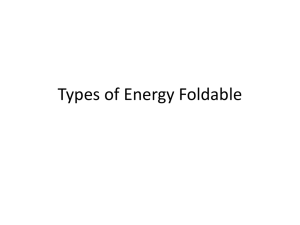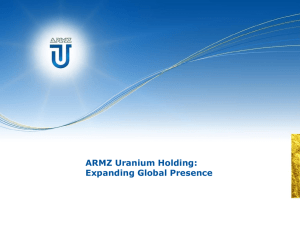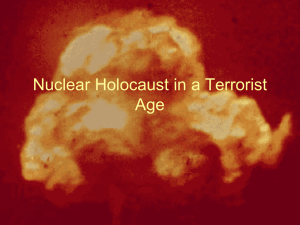Mixtures in Industry - Grade 7 Science is Awesome!
advertisement
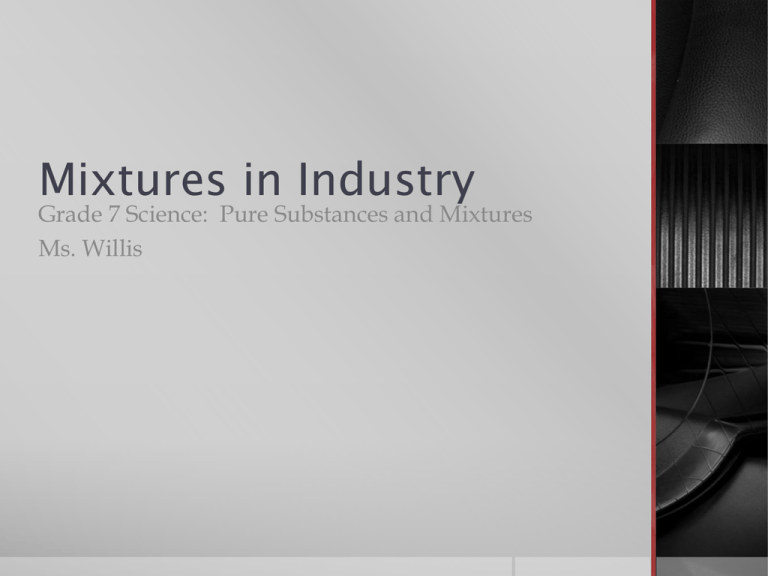
Mixtures in Industry Grade 7 Science: Pure Substances and Mixtures Ms. Willis Mixtures in Industry Learning Goal: To identify some industry applications of separating mechanical mixtures and solutions. Mixtures in Industry Many industries separate mixtures to produce pure products. We are going to study three industries that separate mixtures: 1. The flour industry 2. The petroleum industry 3. The nuclear power industry Making Wheat Flour 2 Steps are used for making wheat flour: 1. Purifying the wheat grains 2. Grinding the Wheat Grains Making Wheat Flour: Step 1 - Purifying the wheat grains Wheat flour must be made from wheat grains and nothing else. The grains are first passed through a sieve which removes sticks and stones. Then a vacuum sucks up lighter impurities such as dust and leaves. Magnets pick out pieces of iron and steel. Making Wheat Flour: Step 2 - Grinding the Wheat Grains A wheat grain has 3 main parts: endosperm, bran and wheat germ. In a process called “milling”, metal rollers break open the wheat grains, then the mixture is passed through a series of sieves to separate the endosperm, bran and germ from each other. Making Wheat Flour Endosperm is used to make white flour. Bran and wheat germ are often sold separately and added to breads, muffins, etc. Bran and wheat germ adds fibre and nutrients. Whole-wheat flour is a mixture of all three parts of the wheat grain. Eating products made from whole wheat flour is a healthy choice because it is less processed and contains more nutrients. Refining Petroleum Petroleum, or crude oil, is a homogeneous mixture of many pure substances found deep in the ground. As we have learned before, many products in our everyday lives are made from petroleum: plastics, asphalt, medicines, synthetic fibers and fertilizers are some examples. We also use petroleum to make fuel for vehicles and to make heat. Refining Petroleum Petroleum comes out of the ground as a thick, liquid mixture of many different substances. Each component of the mixture boils at a different temperature. Engineers have developed a technology to separate the various components. Refining Petroleum A furnace heats the petroleum until its components begin to evaporate. The hot gases rise through a tall column that cools the gases. Different components of the gas cool at different temperatures. The liqud collected at each level is called a “fraction”. Petroleum Refining and the Environment Risks of refining petroleum: Spilling during shipping (risk to land and/or water) Leaks during refining process (released into air) Risk of explosions and fire Bad smell and noise Uranium and Nuclear Power Ontario uses a lot of electricity for heating, cooling and powering machines and electrical devices. We use several energy sources for this including running water, fossil fuels and uranium. About half of Ontario’s energy comes from nuclear power. In each case an electrical generator (a machine with moving parts that produce electricity when they spin) converts the energy into electricity. Uranium and Nuclear Power The inside of a generator: Uranium and Nuclear Power Uranium is a radioactive substance. Radioactive: a term used to describe pure substances whose particles naturally split into smaller particles, releasing energy as they break apart. The release of energy is called nuclear energy. This energy is used to generate electricity in a nuclear power plant. Nuclear energy: the energy released when the particles of a pure substance like uranium split apart. Uranium and Nuclear Power Uranium and Nuclear Power Nuclear power plants are usually easy to identify due to their distinctive cooling towers: Uranium and Nuclear Power How are the uranium particles split? Uranium occurs naturally in rocks called uranium ore. It is separated from the ore by crushing the ore and adding a solution that dissolves the uranium. The waste rock is sieved out and uranium-containing solution is collected. The water is evaporated from the solution, leaving a solid. This solid is further processed into pure uranium pellets. Uranium and Nuclear Power Inside a nuclear power plant, the uranium pellets are placed in the centre, or core, of a nuclear reactor where the uranium particles are split apart and energy is released. The energy heats water surrounding the core. This water is turned into steam which turns blades of a turbine which power generators to produce electricity. Uranium and Nuclear Power The glow caused by intense radiation. The high-energy particles ejected into the surrounding water or air by an intense radioactive source such as this nuclear reactor core produce a ghostly bluish glow. Uranium and Nuclear Power When a certain fraction of uranium particles has split, the energy production slows down and the used particles need to be replaced with new pellets. Over 90% of used uranium is reprocessed and used again in a nuclear reactor. The remainder must be disposed of. Uranium and Nuclear Power Advantages of nuclear power: 1. It does not produce air pollution that causes acid rain. 2. It does not release carbon into the environment that contributes to climate change. So, why do many people oppose nuclear power? Uranium and Nuclear Power 1. Risk of something going wrong with the nuclear reactor that would release radioactive particles into the environment. This happened in 1986 in Chernobyl, Ukraine. High levels of radiation from radioactive substances can cause serious diseases like cancer and even death. Uranium and Nuclear Power Here is an explanation of what happened in Japan after the tsunami: https://www.youtube.com/watch?v=BdbitRlbLDc Uranium and Nuclear Power 2. Disposing of uranium is a problem. Used uranium is still radioactive and continues to release radiation and thermal energy for thousands of years. It cannot just be buried in a landfill as the surrounding rock, soil and water would be contaminated. This is a problem that has not yet been resolved, and the debate continues.


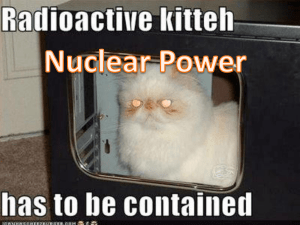

![The Politics of Protest [week 3]](http://s2.studylib.net/store/data/005229111_1-9491ac8e8d24cc184a2c9020ba192c97-300x300.png)


